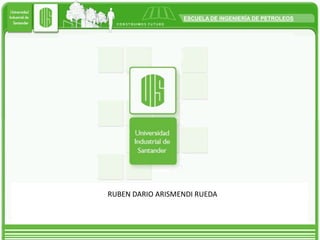Report
Share

Recommended
More Related Content
What's hot
What's hot (20)
2.3 Apply the different types of algorithm to solve problem

2.3 Apply the different types of algorithm to solve problem
Algorithms and flowcharts ppt (seminar presentation)..

Algorithms and flowcharts ppt (seminar presentation)..
Programming aids- Algorithm, Flowchart, Pseudocodes and Decision table

Programming aids- Algorithm, Flowchart, Pseudocodes and Decision table
Csc 130 class 2 problem analysis and flow charts(2)

Csc 130 class 2 problem analysis and flow charts(2)
Similar to Approximation and error
Similar to Approximation and error (20)
(Slides) Efficient Evaluation Methods of Elementary Functions Suitable for SI...

(Slides) Efficient Evaluation Methods of Elementary Functions Suitable for SI...
Numerical analysis using Scilab: Error analysis and propagation

Numerical analysis using Scilab: Error analysis and propagation
More from rubenarismendi
More from rubenarismendi (16)
Recently uploaded
Recently uploaded (20)
Where to Learn More About FDO _ Richard at FIDO Alliance.pdf

Where to Learn More About FDO _ Richard at FIDO Alliance.pdf
State of the Smart Building Startup Landscape 2024!

State of the Smart Building Startup Landscape 2024!
Choosing the Right FDO Deployment Model for Your Application _ Geoffrey at In...

Choosing the Right FDO Deployment Model for Your Application _ Geoffrey at In...
Easier, Faster, and More Powerful – Notes Document Properties Reimagined

Easier, Faster, and More Powerful – Notes Document Properties Reimagined
Easier, Faster, and More Powerful – Alles Neu macht der Mai -Wir durchleuchte...

Easier, Faster, and More Powerful – Alles Neu macht der Mai -Wir durchleuchte...
What's New in Teams Calling, Meetings and Devices April 2024

What's New in Teams Calling, Meetings and Devices April 2024
Extensible Python: Robustness through Addition - PyCon 2024

Extensible Python: Robustness through Addition - PyCon 2024
Introduction to FDO and How It works Applications _ Richard at FIDO Alliance.pdf

Introduction to FDO and How It works Applications _ Richard at FIDO Alliance.pdf
Your enemies use GenAI too - staying ahead of fraud with Neo4j

Your enemies use GenAI too - staying ahead of fraud with Neo4j
TEST BANK For, Information Technology Project Management 9th Edition Kathy Sc...

TEST BANK For, Information Technology Project Management 9th Edition Kathy Sc...
Portal Kombat : extension du réseau de propagande russe

Portal Kombat : extension du réseau de propagande russe
Continuing Bonds Through AI: A Hermeneutic Reflection on Thanabots

Continuing Bonds Through AI: A Hermeneutic Reflection on Thanabots
Using IESVE for Room Loads Analysis - UK & Ireland

Using IESVE for Room Loads Analysis - UK & Ireland
Approximation and error
- 1. RUBEN DARIO ARISMENDI RUEDA
- 3. INTRODUCTION Approximation and round-off error is an interesting topic for all engineers. Because all the measures taken from experiments or studies in real world are not exact, which causes deviations (errors) on the results that we obtain from the solutions.
- 4. Approximation: Approximation usually occurs when an exact form or an exact numerical number is unknown or difficult to obtain. To talk about approximation, we have to introduce a new concept ''Number of Significant Figures'' that indicates Precision (number of digits after a coma). Most of the times when we have a number with many digits after a coma, we often take three digits, in other terms, we approximate the number. Computer programs in numerical methods often take an specific number of significant digits. ≈
- 5. Error: ''Numerical errors arise from the use of approximations to represent exact mathematical operations and quantities. The include truncation errors, which result when approximations are used to represent exact mathematical procedures, and round-off errors, which result when numbers having significant figures, are used to represent exact numbers.''*Numerical Methods for Engineers . Steven C. Chapra, pag 54 .The errors appears for a simple reason, which is ''empirical measurements'', all the data that we take are by our senses, we are not perfect so some deviations are include in every measurement we take. That's why is so important to calculate them, and try to have a small error, which indicates that we are really close from the exact result or near the result that we expect.
- 7. Types of errors. Truncation Errors: it has two types of errors.Local truncation error:The local truncation error is the error that our increment function, A, causes during a given iteration, assuming perfect knowledge of the true solution at the previous iteration.Global truncation errorThe global truncation error is the accumulation of the local truncation error over all of the iterations, assuming perfect knowledge of the true solution at the initial time step.
- 8. 2. Rounding Error :rounding error, is the difference between the calculated approximation of a number and its exact mathematical value. EXAMPLE: Truncation: simply chop off the remaining digits; also called rounding to zero. 0.142857 ≈ 0.142 (dropping all significant digits after 3rd) Round to nearest: round to the nearest value, with ties broken in one of two ways. The result may round up or round down. 0.142857 ≈ 0.143 (rounding the 4th significant digit. This is rounded up because 8 is higher than 5 )
- 10. ¿HOW THE ERROR IS CALCULATED? To calculate the error we have to know the approximate value. This is the Absolute Error; which is equal to the discrepancy between the truth and the approximation. Absolute Error (E)= true value - approximation . (E)means ''Exact value of error'' Now there is another value that we have to concern about, and is the ''Relative Error ()''. which is the percentage difference between the absolute value and the real value.
- 12. NumericalMethodsforEngineers . Steven C. Chapra